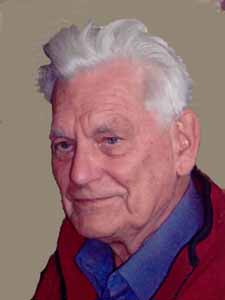
Working With Objects - The OOram Software Engineering Method
Describes object oriented principles behind an industrial approach to software production. Includes examples of procedures on the enterprise level; large-scale applications on the systems level; and small , technical details on the program design level.
Tag(s): Software Engineering
Publication date: 29 Mar 1995
ISBN-10: 0134529308
ISBN-13: n/a
Paperback: n/a
Views: 15,275
Type: N/A
Publisher: Manning Prentice Hall
License: Academic Free License version 3.0
Post time: 20 Apr 2007 02:57:06
Working With Objects - The OOram Software Engineering Method
 Describes object oriented principles behind an industrial approach to software production. Includes examples of procedures on the enterprise level; large-scale applications on the systems level; and small , technical details on the program design level.
Describes object oriented principles behind an industrial approach to software production. Includes examples of procedures on the enterprise level; large-scale applications on the systems level; and small , technical details on the program design level.
Publication date: 29 Mar 1995
ISBN-10: 0134529308
ISBN-13: n/a
Paperback: n/a
Views: 15,275
Document Type: N/A
Publisher: Manning Prentice Hall
License: Academic Free License version 3.0
Post time: 20 Apr 2007 02:57:06
Click here to read the full license.
Trygve Reenskaug wrote:This is a preprint. Do not copy. All rights reserved.
From the Preface:
The main theme of this book is to describe complex phenomena as structures of interacting objects. Object technology is applicable to a wide range of phenomena on many different levels. Examples are work procedures on the enterprise level; large-scale applications on the systems level; and small, technical details on the program design level.
The goals of the book are:
- To provide a comprehensive description of the object paradigm and its applications
- To show how it supports a number of different views on the same model; permitting the analyst to work with a data-centered approach, a process-centered approach, or a combination of the two.
- To show how very large and complex systems can be described by a number of distinct models.
- To show how composite models can be derived from simpler base models.
- To describe a number of powerful reuse techniques.
- To describe how a systematic policy of reuse impacts work processes and organization.
- To show how very large systems can be described and managed in a decentralized manner without central control.
Intended Audience:
We assume that you are familiar with how computers and computer programming influence modern information processing, but do not assume familiarity with a particular programming language or operating system. Most of the book is written for the manager and person of business who is searching for new and better ways to produce software, for the consultant who wants to use objects to design new business organizations, and for the system creator who wants to understand how to exploit the full power of object orientation. A few chapters are clearly marked as being directed to the expert computer programmer.
Tweet
About The Author(s)
No information is available for this author.
Trygve Reenskaug is professor emeritus of informatics at the University of Oslo. He has 50 years experience in software engineering research and the development of industrial strength software products.

Trygve Reenskaug is professor emeritus of informatics at the University of Oslo. He has 50 years experience in software engineering research and the development of industrial strength software products.